- A coalition of environmental NGOs known as the Zero Deforestation Working Group has developed a practical plan called “A Pathway to Zero Deforestation in the Amazon.” First proposed at the COP23 climate summit in Bonn, Germany, last November, the NGOs propose workable strategies for ending deforestation quickly in Brazil, while also yielding significant economic and social benefits.
- Deforestation continues, the report says, because cleared land is worth more than forested land in the Amazon, so there is a strong economic incentive to buy up large amounts of forestland and clear it. Also, enforcement of Brazilian forestry laws remains weak. Finally, markets have been slow to make, and implement, commitments to remove deforestation from their supply chains.
- Deforestation solutions require a new development vision for the Brazilian Amazon, say analysts, with policies that promote the sustainable use of forest products, and policies that end the expansion of agro-commodities into native forests, and promote agribusiness growth on the nation’s surplus of 15-20 million hectares of already deforested and degraded land.
- Law enforcement to curb illegal land grabbing also needs to happen, especially on the 70 million hectares of public land in Amazonia not allocated for specific uses. Also, government must start tracking cattle from point of origin with indirect suppliers, where deforestation occurs, to slaughterhouses. A key step to a solution: open talks between agribusiness and environmentalists.

Brazil has no reason to further deforest the Amazon, as there is plenty of degraded land available for agribusiness growth and profit. This is the positive pragmatic message put forth in “A Pathway to Zero Deforestation in the Amazon,” a report first launched at COP23 in Bonn, Germany, last November, by the Zero Deforestation Working Group (ZDWG), a coalition of NGO analysts from Greenpeace, Instituto Centro de Vida, Imaflora, Imazon, Instituto Socioambiental, Amazon Environmental Research Institute (IPAM), The Nature Conservancy (TNC), and the World Wide Fund for Nature (WWF).
The document’s aim is to illustrate workable strategies for eliminating Amazon deforestation in the short term, with environmental, economic and social benefits for all.
However, what works on paper does not always work so well in the real world – especially the political and corporate world, and in particular today’s Brazil, where the bancada ruralista agribusiness lobby in congress and the Temer administration vigorously defends the interests of the rural sector, while undercutting the environment and social movements. The Zero Deforestation Working Group argues that major policy shifts could lead to a win-win for all sides.
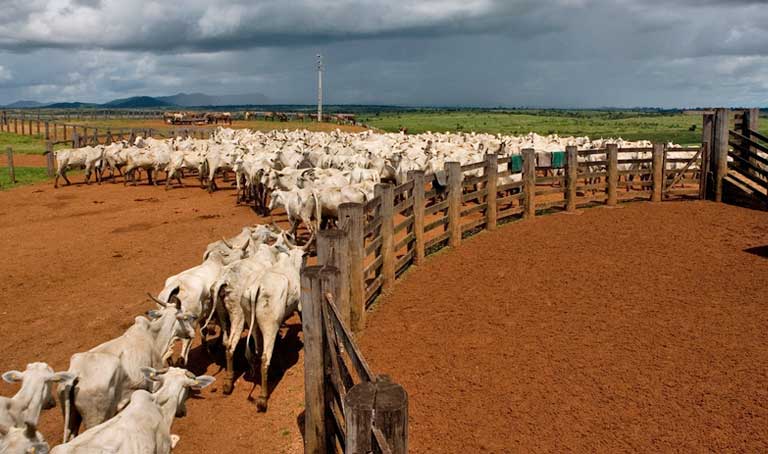
Is deforestation required for Brazilian prosperity?
The Brazilian rainforest with its extraordinary biodiversity is vital to the world, if only for its capacity of storing spectacular amounts of carbon, helping stave off rapid, or even runaway, climate change. However, total forest loss there between 1970 and 2017 was 768,935 square kilometers (296,887 square miles), an area more than twice the size of Germany. And while the amount of annual forest cutting in the Brazilian Amazon has been drastically reduced since the peak deforestation year of 2004, a total of 6,624 square kilometers (2,558 square miles) was deforested between August 1, 2016 and July 31, 2017, a loss equivalent to 112 Manhattan islands, or half the U.S. state of Maryland.
However, analysts point out that — with most money and power concentrated in the hands of a few — all of this forest clearing failed to generate wealth for the majority of Amazon inhabitants — among Brazil’s poorest citizens.
The pathways document stresses an important, often ignored, reality: deforestation’s contribution to the Brazilian economy is negligible. The average area cleared per year between 2007 and 2016 (7,502 square kilometers, or 2,897 square miles) added only about R $453 million (US $141 million) annually in gross value of agricultural production (that’s production volume multiplied by the cost of products). That amount represents only 0.013 percent of the average Brazilian GDP over the 2007-16 period.
So, while Brazilian agribusiness is truly an economic juggernaut, just as the ruralists claim, the actual amount that annual deforestation in the name of agribusiness expansion adds to the economy is miniscule.
Paulo Moutinho, a senior scientist working at the science-based NGO Amazon Environmental Research Institute (IPAM), believes deforestation is no longer necessary for Brazil’s growth. He notes the country has a surplus of 15-20 million hectares (38,610-77,220 square miles) of already deforested and degraded land that is underused or abandoned by agribusiness. “Recovering this area for agriculture, we could expand agricultural production without cutting down a single tree,” Moutinho told Mongabay.


“In addition, a large proportion of the deforested area has been used by very extensive and low-profit cattle ranching activities,” he said. Simple techniques, such as pasture rotation, could increase cattle-to-hectare density and drastically increase grazing land productivity. That efficiency would vacate more already deforested land for crop expansion, and hence reduce pressure on standing forests.
Forest Engineer Vinicius Guidotti, a researcher at Instituto de Manejo e Certificação Florestal e Agrícola (Imaflora), and coordinator of its geoprocessing team, agrees. Brazilian pasturelands, he says, occupy about 166 million hectares (640,929 square miles). That is two times bigger than the land occupied by croplands, which is 77 million hectares (297,298 square miles). Beef production over this huge area is extremely inefficient, he says, accommodating only about 1.32 head of cattle per hectare on average.
“The good news is that with small changes in pasture and cattle management, we could easily raise this average to 2 head per hectare, and this would release 56 million hectares (216,217 square miles) for cropland expansion while maintaining the same cattle herd,” he said. “Of course, this is not an easy task, and there are several challenges to scale up the necessary changes.” More good news: as of 2017, more than 3,316,000 square kilometers (1,280,314 square miles) of Brazilian Amazon forest remains standing.

Quick profit and lack of commitment
Beyond these statistical realities, the large-scale inefficiencies of Brazilian agribusiness remain in practice today, and do not bode well for future deforestation.
According to Ian Thompson, deputy executive director of The Nature Conservancy’s Brazil Program, the primary reason why is simple: land purchase price.
Cleared land is worth more than forested land, so there is a strong economic incentive to buy up large amounts of forestland and clear it. In addition, enforcement of Brazilian forestry laws remains weak, which opens a window of opportunity for conducting illegal deforestation, even on public lands and within indigenous reserves, with minimal risk of arrest or significant penalty.
In addition, “Markets have been slow to make and implement commitments to remove deforestation from their supply chains, despite consumer demand” to do so. Thompson told Mongabay. Companies of all kind — beef, soy, corn, cotton, palm oil, and timber providers — haven’t responded with sufficient urgency and resolve to ending Amazon deforestation.
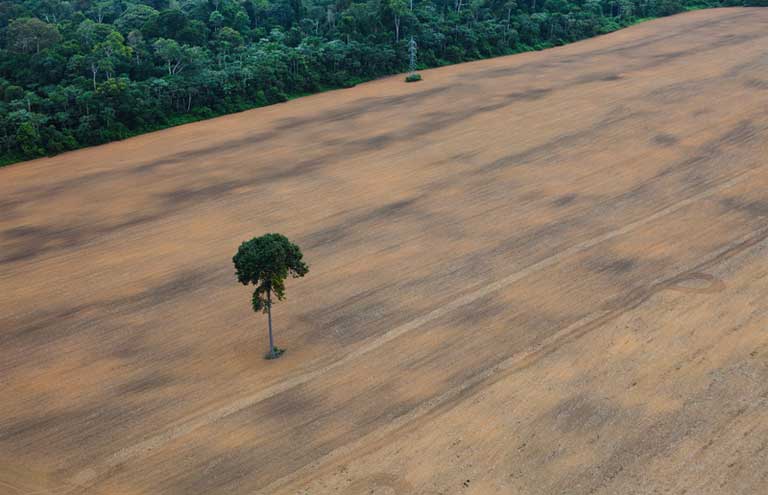
A dearth of political will
There are other critical factors contributing to Amazon deforestation today. Greenpeace Brazil Amazon campaigner, Cristiane Mazzetti, notes that the creation of new protected areas nearly ceased in recent years, despite land conservation being one of the most successful means of reducing deforestation. “To make things worse, there are [currently] proposals in the [Brazilian] House of Deputies aiming to reduce level of protection of conservation areas (such as bill 8,107/2017). And the further demarcation of indigenous lands is practically frozen,” she told Mongabay.
Another problem: the beef supply chain is very complex, and deforestation agreements between Brazilian slaughterhouses and cattle ranchers still do not document and control indirect suppliers. As a result, beef herds are often fattened on land illegally deforested by indirect suppliers, Mazzetti explains, but are then passed on to direct suppliers — ranches that have not illegally deforested. So even though slaughterhouses may sign zero-deforestation commitments with direct suppliers, there’s no way of knowing whether the cattle being processed may have contributed to forest clearing.
The simple solution would be for government and industry to do a better job of livestock tracking, starting at the point of origin and leading up the supply chain from indirect supplier, to supplier, to the slaughterhouse. Only about 100 companies account for 93 percent of cattle slaughter in the Amazon, so it would not be that challenging logistically to reach out to these firms and offer them incentives for embracing a zero-deforestation goal.
Mazzetti blames the Brazilian government for a lack of will in this regard. At COP21 in Paris in 2015, Brazil pledged to achieve zero illegal deforestation in the Amazon, but not until 2030. “The message sent was that the crime would be tolerated for 15 more years,” she said.
Another problem: Brazil’s new Forest Code, adopted in 2012, created mechanisms for forest conservation, but also granted amnesty to long time illegal deforesters. “[T]he amnesty was given to farmers who deforested illegally prior to 2008, and new political measures such as bill 759 [now, law 13,465/2017] give a green light to deforestation, and act as an incentive for further environmental crime,” Mazzetti said.

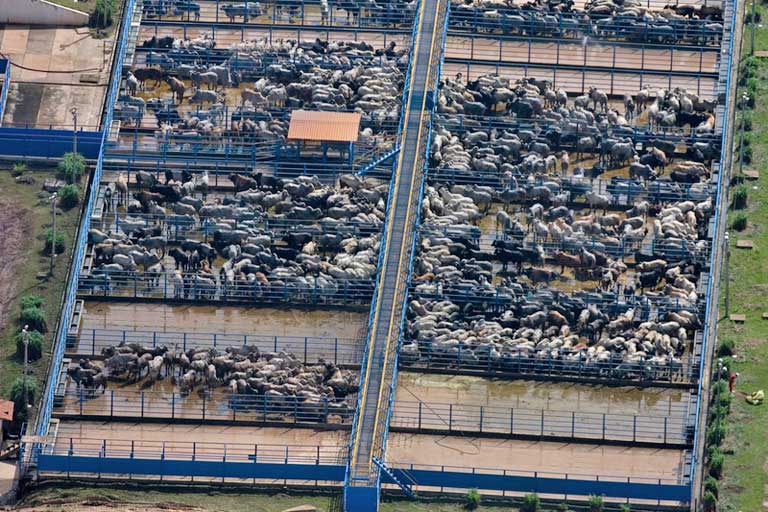
Solutions
Most analysts agree: deforestation is a complex problem, and so are the solutions. “There’s no silver bullet,” says Mauricio Voivodic, WWF Brazil’s executive director. “Tackling deforestation in the Amazon requires a new development vision for the region, with policies that promote the sustainable use of forest products and the expansion of agro-commodities over degraded lands.”
The ZDWG report offers a roadmap to achieving those goals, with four lines of action in various sectors, including implementation of effective and ongoing environmental public policies; generating support for sustainable forest uses and best farming practices; implementing drastic market restrictions on products associated with new deforestation; and engaging Brazilian voters, global consumers and national and international investors in the effort to end forest clearing.
One of the most urgent actions needed, according to analysts, is the beefing up of law enforcement to curb illegal land grabbing, especially on public lands. In 2016, at least 24 percent of deforestation in the Amazon occurred on public lands not allocated for specific uses.

Today, there are 70 million hectares (270,271 square miles) not allocated for specific uses in the Amazon. These areas, conservationists suggest, need to be converted into indigenous lands and/or conservation units to curb speculative deforestation — a process by which public lands are illegally cleared in order to sell the land at a high profit to cattle ranchers or farmers.
Brazil also needs to vigorously support a sustainable forest economy, experts say. According to official statistics cited in the ZDWG report, extraction of forest products yielded an average R$ 3 billion ($ 0.9 billion) in profit in 2015 and 2016. However, the potential for economic growth within the Amazon has been poorly exploited, since most forest products profit is exported to other regions, and other parts of the world, while about half of all logging there is done illegally.
The good news, the NGO analysts say, is that the government could support best practices for generating forest products by strengthening and improving Brazilian programs already in place, including the National Plan for Biodiversity Products Supply Chain and General Policy for Minimum Price for Biodiversity Products (PGPMBio); the National Program for Strengthening Family Agriculture (PRONAF); and the National Policy for Technical Assistance and Rural Extension (PNATer).
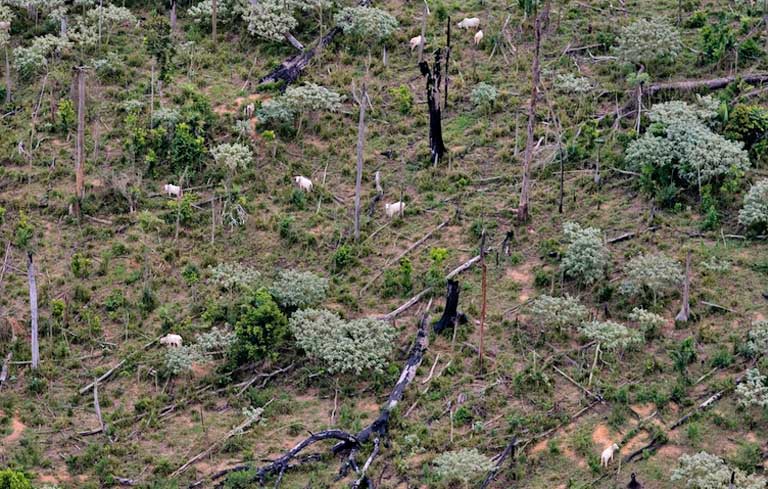
Best practices also need to be implemented in the cattle industry. This, says the report, could be done by increasing livestock productivity from 80 kilograms (176 pounds) to 300 kilograms (661 pounds) per hectare per year, and restoring 391,000 hectares (1,509 square miles) of forest per year. Achieving that goal would not be inexpensive, but the investment needed is just 15 percent of the R$ 5 billion ($ 1,5 million) that the government offers annually in rural credit for livestock.
“There is enormous untapped [cattle and crop land] potential in underused, already opened lands,” explains TNC’s Thompson. Grain production growth could be achieved by converting suitable pasture land, while meat production could grow via greater investment in technology and professional management.
Thompson warned of the danger to agribusiness of not taking action: “There is the downside for long term growth with deforestation — a loss of ecosystem services such as carbon storage and water conservation, which generates uncertainty for current agricultural production sustainability.”

The upcoming elections
The ZDWG analysts believe that consumers and civil society have an important role to play in protecting Amazonian forests by getting informed and pushing for deforestation-free supply chains, exposing and boycotting companies that disregard best practices, and electing officials committed to ending deforestation.
Brazil’s presidential election takes place in October 2018, and could be an Amazon game changer, depending on which candidates win, and whether the bancada ruralista (the lobby of agribusiness, cattle ranchers, and the wealthy rural elite) remains powerful in the congress and new administration.
What is clear to experts is that the current political situation needs to change if the remaining Amazon rainforest is to be preserved.
“The ruralistas always had power and influence, but under Michel Temer’s term, this political power really got stronger,” said WWF-Brazil’s Voivodic. What civil society organizations can do as the election approaches, he said, is stick to the fundamentals: “offering counterpoints based on science,… and contributing positively to the construction of solid and consistent socio-environmental policies, offering solutions, criticizing setbacks, articulating with other social actors for positive agendas.”
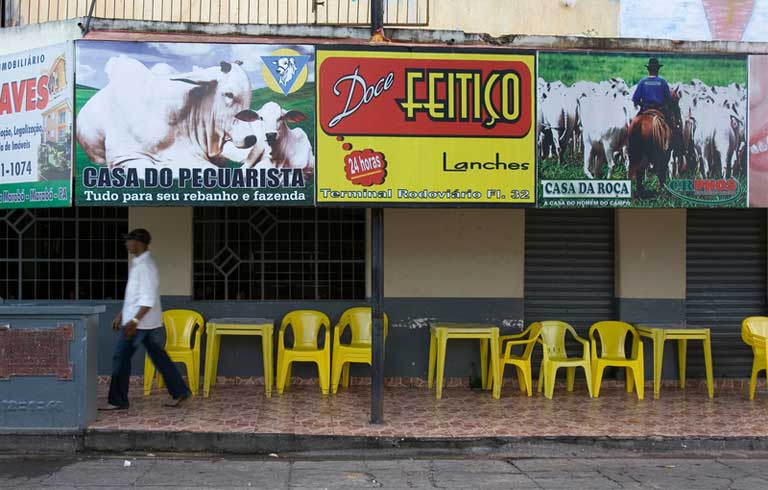

Greenpeace’s Mazzetti notes that recent opinion polls show that most Brazilians support forest conservation, and that international buyers don’t want to invest in products associated with deforestation. So public pressure on the market, and the enforcement of environmental regulations and laws are the key to undermining the most dangerous ruralist programs.
A recent example of what the Brazilian people can accomplish, she says, came with the National Copper and Associated Reserve (RENCA) case, when President Temer tried to abolish this Amazon reserve and open large areas for mining. “[S]ociety, several NGOs and celebrities engaged in different kind of mobilizations and achieved a level of pressure which made the government walk back and revoke its decision,” she recalls, stressing that future mobilizations will be needed, not only to resist bad proposals, but to support good ones that enhance conservation.
IPAM’s Moutinho believes that involving the ruralistas in the environmental debate is key. “[W]e are making efforts to bring around the same table the members from the Frente Parlamentar Ambientalista, and members from the Frente Palarmentar da Agricultura to talk about the risk involving deforestation and agriculture production in the Amazon,” he said, noting that forest protection is the only sure way of protecting the agricultural sector against global warming.
“Our hope is that talking about common points [such as the economy] that we can make some advance in terms of consensus and promote some policy to protect the remaining forest,” he added.

TNC’s Thompson believes that escalating climate change will result in market restrictions and economic losses that could accelerate a shift to sustainability. But he also thinks that the agribusiness sector and the forces for sustainability are already getting closer and finding common ground. “Elections are an opportunity to renew the national vision and strategy priorities,” he said, adding that a new government could, for example, prioritize the settling of land titles as a prerequisite for Amazon modernization, or offering credit for those wanting to pursue low-carbon agriculture.
“We, the forces in favor of sustainability, are not acting against the development of Brazilian agriculture,” emphasized Imaflora’s Guidotti. “We are acting against an old model of agricultural production that is not coherent with the existent scientific knowledge about the social benefits of conserving a healthy environment, the well-known environmental services.”
A farmer who doesn’t care about the environmental on his farm, or a company that doesn’t care about the sustainability of its supply chain, are doomed to see their business fail in the long term, Guidotti said. This the bancada ruralista fails to see because it pursues only short-term economic returns.
“We need them to understand these facts to start having a high level discussion about how we could optimize agricultural production expansion, while reducing and mitigating the impacts to the natural environment,” Guidotti concludes. ”The knowledge and the tools to do so are already on the table.”
Citation:
Zero Deforestation Working Group, (2017), “A Pathway to Zero Deforestation in the Amazon,” a report produced by analysts from Greenpeace, Instituto Centro de Vida, Imaflora, Imazon, Instituto Socioambiental, Amazon Environmental Research Institute (IPAM), The Nature Conservancy (TNC), and the World Wide Fund for Nature (WWF). http://ipam.org.br/wp-content/uploads/2017/11/A-Pathway-to-Zero-Deforestation-in-the-Brazilian-Amazon-full-report.pdf
FEEDBACK: Use this form to send a message to the author of this post. If you want to post a public comment, you can do that at the bottom of the page.

